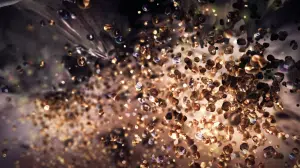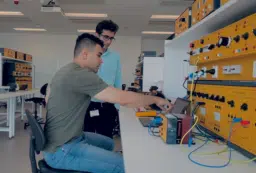Adelaide’s Daniel Trewartha has worked out how to make atoms massless.
The finding is thrilling, as even though protons and neutrons were discovered around 100 years ago, exactly how these particles and their component quarks generate the mass of atoms had remained a mystery. Daniel now believes it’s particles called gluons that play the critical role.
“In each atom, a sea of gluons surrounds the quarks, dragging them around and forming complex shapes in a vortex structure. This process is known as dynamical mass generation,” explains Daniel.
“We’ve discovered that if the vortex structure is removed, dynamical mass generation vanishes.”
“So even though gluons are massless themselves, they are responsible for creating 99% of atomic mass,” he says.
The results were obtained using parallel computing and 3D scientific data visualization.
While the finding is difficult to contextualise, Daniel is confident it will have an impact beyond his laboratory through changing interpretations of data obtained from experiments investigating mass at large facilities like the Large Hadron Collider.
Daniel presented his research at Fresh Science South Australia 2015.
Fresh Science is a national program that helps early-career researchers find and share their stories of discovery. Over 30 early-career researchers nominated for Fresh Science SA, which was held at the South Australian Museum (training) and The Lion Hotel (public challenge event).
Fresh Science South Australia was supported by the The University of South Australia, The University of Adelaide, Flinders University and the South Australian Museum.
Contact: Daniel Trewartha, University of Adelaide, daniel.trewartha@adelaide.edu.au





 Fresh Science is on hold for 2022. We will be back in 2023.
Fresh Science is on hold for 2022. We will be back in 2023.